
Dr. No - the first James Bond film, the one Variety backhandedly referred to as an "entertaining piece of tongue-in-cheek action hokum" - was one of my biggest blindspots before starting this marathon. From afar, I knew Dr. No through documentary clips and pop culture osmosis. Sean Connery's first utterance of "Bond. James Bond" is one of the most iconic male character introductions in film history, which makes it all the easier to have seen it countless times without ever watching the entire movie around it. The same goes for Ursula Andress emerging from the water as if she'd walked straight out of a Playboy Centerfold.
 An entrance so nice they re-did it twice.
An entrance so nice they re-did it twice.
Beyond that, the film was a complete mystery to me. So, let's start with the basics: what is Dr. No about?
A Murder Mystery That Turns Into a Standoff With a Madman

After the murder of a British spy in Jamaica, 007 James Bond is sent to find the killer, but the tropical island is crawling with spies (like photographer Annabel Chung, played by reigning Miss Jamaica/flight attendant Marguerite LeWars) and secret allies (like CIA agent Felix Leiter, Jack Lord's sole Bond movie appearance). Bond leans on his few friends to help smoke out corruption in the local field office and discover that an evil and mysterious figure named Dr. No (Joseph Wiseman) seems to be behind everything.
Small problem: Dr. No has his own private island, Crab Key, and his own private army. Few would dare infiltrate such a place, but few are as resourceful as James Bond. Plus, few private islands just happen to have a woman as stunning as Honey Ryder (Andress, her voice dubbed by Nikki van der Zyl) randomly swimming nearby for seashells, but James Bond is that kind of lucky. With Honey newly by his side, James will take on a madman and...save the Space Race?
They filmed on location in Jamaica and back at Pinewood Studios, went over budget, and just generally didn't know what kind of game changer they'd made. Looking on all of it from afar - and in some cases, right next door since he lived part of the time in Jamaica - was Ian Fleming, a rather curious Brit with a rooting interest in seeing Bond prevail.
Let's Start With the Cheapest One
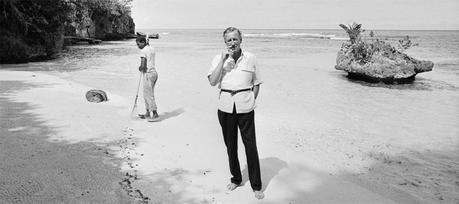
A journalist turned WWII intelligence officer turned novelist, Ian Fleming was a confirmed bachelor well into his 40s, and on the eve of his first marriage and move into fatherhood he felt compelled to create a fantasy figure forever unencumbered by such restrictions. So, calling upon his years of secret service and stealing a name from a beloved American ornithologist, he created 007 James Bond. Within a year of the publication of his first Bond novel, Casino Royale, there was an American TV adaptation and shortly after that, a comic strip. Though already quite popular in the UK, the book sales exploded in the States in 1961 when Life Magazine reported From Russia With Love was one of President John F. Kennedy favorite novels.
By the time that happened, producer Harry Saltzman already owned the film rights to every Bond novel except Casino Royale. He'd beaten fellow producer Cubby Broccoli and United Artists (UA) president David Picker, both of whom had been circling the property, to the punch. Broccoli and Saltzman struck a 50/50 deal to produce the films together and found a willing distributor in UA. Their proposal was to produce one Bond film a year for at least a couple of years, which meant finding a leading man willing to commit to being Bond for multiple years. That proved to be a challenge, but before they could even get that far they had to decide on something far more rudimentary: which book to adapt first.
Dr. No was Fleming's 6th Bond novel and by no means the first choice for a film adaptation. Saltzman and Broccoli would have much rather made Thunderball but a lawsuit over the rights was brewing. The most obvious starting point, Casino Royale, had been sold to producer Gregory Ratoff and then to his agent, Charles K. Feldman. Dr. No emerged as the best option for rather pragmatic reasons: it seemed the easiest - translation: cheapest - to adapt.
Frequent Saltzman collaborator Johanna Harwood was immediately assigned the task of turning the book into a script treatment, kicking off a back and forth process with multiple other writers until finally Harwood, Richard Maibaum, and Berkley Mather received final screenplay credit.
After being turned down by Guy Hamilton and multiple others, the producers finally found their director in Terence Young, who proved instrumental in setting the tone and visual flair and filling the cast with many people he'd worked with before, including a former milk deliveryman name Sean Connery (who'd starred in Young's 1957 film Action of the Tiger.) Long, long, loooong story short, much infighting ensued before they settled on Connery as their last man standing.
Historical Context
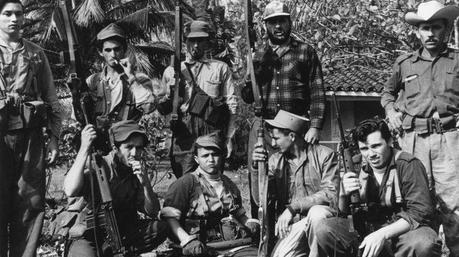
The choice, however pragmatic it may have been, to pick a Bond story set just south of Cuba was rather fortuitous. As John Cork, an avid Bond fan who co-produced most of the "making of" featurettes on the Bond DVD and Blu-Ray box sets, put it: "The strategic importance of the Caribbean was constantly in the headlines with Castro's takeover of Cuba in '59 and the Bay of Pigs invasion in '61. The space race was in full swing. The story played into these headlines, and, of course, the film was released in the UK just before the Cuban Missile Crisis set the world on edge."
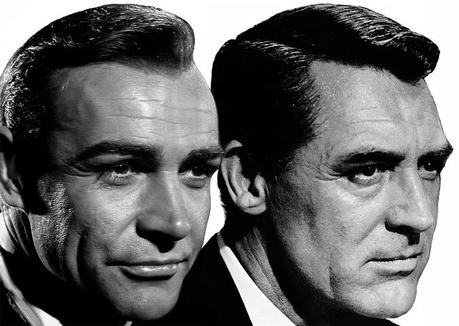
Beyond the topical resonance of the story, the success of Alfred Hitchock's popular spy caper North By Northwest just three years earlier whet the public's appetite for a story featuring quickly changing locations, smart-assed protagonist, debonair villain, and initially cool leading lady who eventually warms to the hero's charms.
Taking all of that even further and adding in a quick editing style, Dr. No offered its own unique spin on the spy genre and was quite unlike anything anyone had ever seen before. When viewed today, however, does it still feel like a Bond movie?
The Formula Isn't Fully Formed Yet, But It's Close
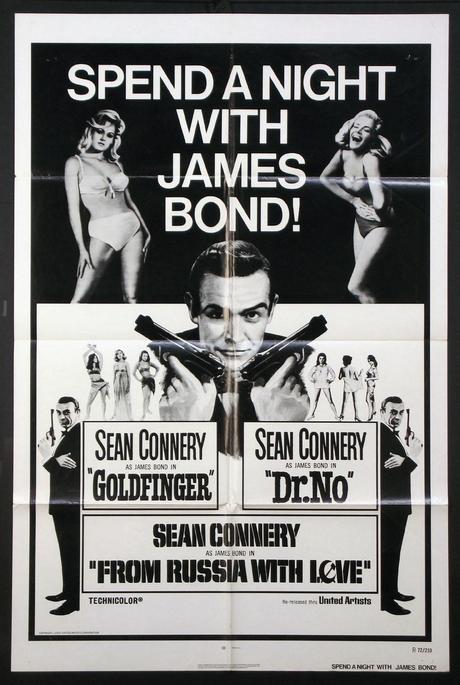
Dr. No was dumped into drive-ins and denied an upmarket release in major American cities like New York. Blofeld isn't in it. Neither is Q, the Aston Martin, or any spy gadget whatsoever. There is no pre-credits action scene nor is there a catchy title song. The (secretly) naked women and bombastic vocals of later credits sequences are represented here by dancing silhouettes, bouncing dots, and a calypso rendition of "Three Blind Mice." Ursula Andress doesn't emerge from the Caribbean Sea like some exotic underwater goddess until the one-hour mark. (Bond's face doesn't appear until around minute eight.) The fight scenes are over before you know it. Heck, while the gun barrel opener is present and accounted for, it's not even Sean Connery firing the gun!
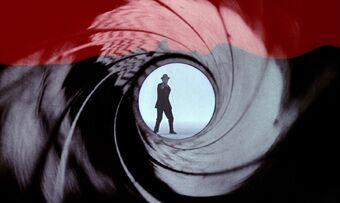
And yet... Dr. No is still unmistakably a Bond movie. His quips may be fewer in number, but they are there. Q isn't around, but M and Moneypenny are. John Barry's orchestration of Monty Norman's "Bond Theme" is layered throughout the soundtrack. The three-Bond-girl formula is established: first a passing fancy (Eunice Gayson's Sylvia Trench), followed by a femme fatale (Zena Marshall's double agent Miss Taro), before finally revealing the girl (Honey Ryder) Bond will ultimately end up with in the absolute final scene of the picture. A larger-than-life villain spells out his evil scheme over dinner, distinctive henchmen make an appearance (the three "blind" assassins), and a cavernous, evil villain lair designed by Ken Adam turns into the setting of an explosive finale.
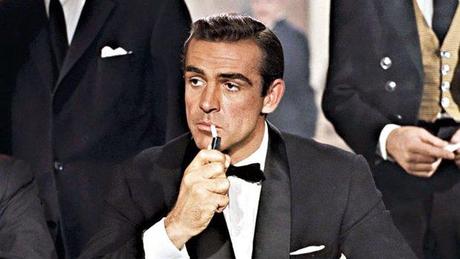
Gliding through it all is a secret agent so compellingly cool that, to borrow a 1962 way of looking at it, the men want to be him and women want to be with him. He drinks his vodka martinis shaken, not stirred, packs a Walther PPK, and is a brute killing instrument with an eye for luxury and gorgeous women. In short, he's James Bond.
To think, it was made by a director (Young) who was maybe the studio's fifth choice and starred a relatively unknown leading man (Connery) who was at least their sixth. Together, they - and the hundred or so assembled crew and cast members who made up the Dr. No production - changed film history forever.
That was nearly 60 years ago, though. Does Dr. No hold up today? Well....
Does it Hold Up Today?
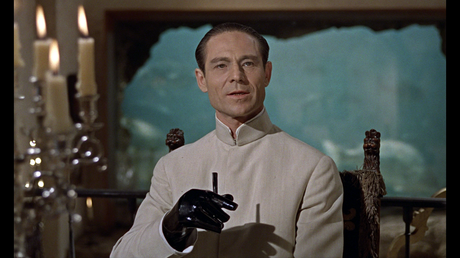
That depends on how much slack you give the sexism and racism of older films. Because, yeah, Bond callously beds a woman he knows is acting against her will, and the film features two Asian characters - well, one of them multiracial - played by Caucasians. As such, if you show Dr. No to your average film class today you are going to get some interesting reactions.
However, as the start of one of the most significant film franchises to ever come our way as well as arguably the birth of the post-war action genre, Dr. No is undeniably significant, but it's also a lot of fun, a well-crafted spy mystery that takes you to exotic locations before morphing into a crazy war of words - and explosions - between a suave hero and a villain with metal hands. The world of spycraft and action movie serials merge to form a thrilling adventure with an attention-grabber - someone put a poisonous spider in Bond's bed! - at the end of every reel.
Still, Dr. No is Bond on a budget, a film produced by people who didn't yet know there was any kind of storytelling formula to honor. As such, it can certainly be found wanting in comparison to many of the franchise's more supercharged later entries, and there are certainly some loose narrative threads and of-its-time casting choices. However, few franchises start off this self-assured and fully formed.
MARATHON NOTES
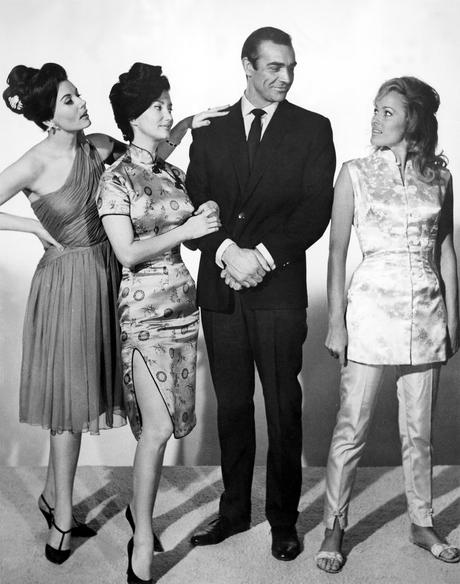
Thoughts on the Bond Women: "Name the first Bond Girl." Most would say Honey Ryder, or lacking that, at least muster up Ursula Andress' name. Wrong! Honey set the template for many Bond Girls to come, but she is not the first. That honor belongs to Sylvia Trench, bested by Bond at cards, extremely willingly bedded by him, and then out of the movie before circling back for a From Russia With Love cameo.
It's a fine enough performance, with her sexually aggressive attitude certainly of a piece with the free-wheeling, swinging sixties. Zena Marshall Miss Taro is a bit harder to take given the double whammy of being a white actress playing an Asian part and Bond's manipulation of her.
Honey Ryder clearly stands above the rest, though, and is quite the impressive character until around the time they get captured and she recedes into damsel in distress syndrome. Before that, she regales Bond with her tragic backstory of killing her own rapist, which plays as shocking even today. It's a shame the film doesn't allow her some of the same fierceness in the face of Dr. No. Either way, I can see why this performance earned Andress a Golden Globe for Best Newcomer.
Ian Fleming Connection:Published in 1958, Fleming's Dr. No novel is very similar to the film, but Fleming's version of Honey has a broken nose and emerges from the water ever so naked and definitely not in an ivory-colored bikini. Plus, his Dr. No has hooks instead of metal hands, subjects Bond to torture experiments, and makes his money selling fertilizer cultivated from a rare bird guano unique to his island. In the end, Bond quarrels with a giant squid and buries Dr. No in guano.
Hey, Biff Tannen, you have some thoughts on that ending?
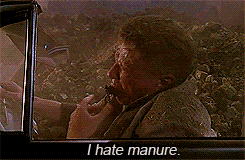
Thank you, Biff. The Dr. No screenwriters clearly felt the same way.
Bond Song Thoughts: What Bond song? Dr. No features several memorable tunes, such as "Underneath the Mango Tree" (sung by Monty Norman's wife Diana Coupland) and "Jump Up" (performed at the Jamaican club by Byron Lee and the Dragonaires), but there is no traditional Bond song. Instead, the song that matters the most here is the "James Bond Theme," which is so damn cool and instantly iconic that editor Peter Hunt kept dropping it throughout the movie.
Coolest Scene: Maybe this is too male gazy of me or perhaps just the ultimate cliched choice, but Ursula Andress emerging from the Sea in that bikini accomplishes something very few other Bond girl entrances does: it stops James completely dead in his tracks.
Favorite Line: Bond: "That's a Smith & Wesson. And you've had your six."
Biggest regret: That this is Jack Lord's only appearance as Felix Leiter.
Little Known Fact: Fleming originally wrote Dr. No in 1956 as a screenplay for what would have been a British television series entitled Commander Jamaica. When that didn't pan out, he adapted the screenplay into his 6th James Bond novel.
Box Office: $59.5m worldwide/$505.8m inflation-adjusted, the lowest-grossing of all the Connery Bond pictures but also, ya know, the very first of all these movies. Given the half century of franchise enrichment that followed, I'd say the investment paid off.
Sources: Nobody Does it Better, The Ultimate Guide to Bond, Some Kind of Hero
NEXT TIME: I dare to watch the 1967 Casino Royale Bond spoof that was such a mess it ended up with 6 different directors. Give me a couple of days on this one, though. So much to unpack.

